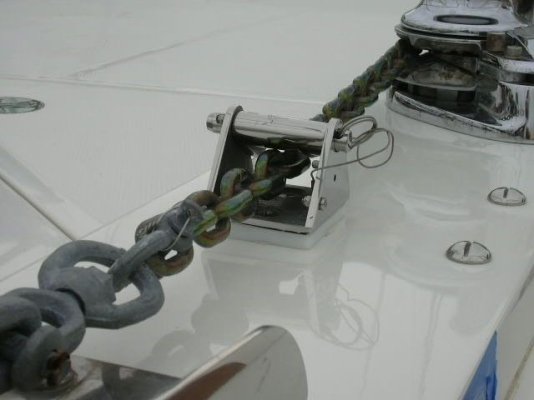skipperdude
Guru
The Australian SARCA (An acronym for Sand And Reef Combination Anchor.)Is essentially a highly modified plow anchor with a convex fluke.
The Rocna Is called a Roll-Bar Anchor The first conceived was the Bugel, by German inventor Rolf Kaczirek. The Rocna combines the Bugel's roll bar with the spade's concave fluke.
The Ronca's shank is similar to that of the Delta,but its inside profile is slightly different in that THE CROWN SECTION CREATES A TIGHT ANGLE AGAINST YOUR BOAT'S BOW ROLLER. tHIS IS INTENDED TO INSURE A SNUG SEAT ON THE ROLLER AND PREVENT MOVEMENT AT SEA. You need an anchor that will stay put on the boat in the roller where it belongs.
*I find the Spade to be superior due to the heavely ballasted tip. 48% of the anchors weight is in the tip.
Thats just me,
The Rocna Is called a Roll-Bar Anchor The first conceived was the Bugel, by German inventor Rolf Kaczirek. The Rocna combines the Bugel's roll bar with the spade's concave fluke.
The Ronca's shank is similar to that of the Delta,but its inside profile is slightly different in that THE CROWN SECTION CREATES A TIGHT ANGLE AGAINST YOUR BOAT'S BOW ROLLER. tHIS IS INTENDED TO INSURE A SNUG SEAT ON THE ROLLER AND PREVENT MOVEMENT AT SEA. You need an anchor that will stay put on the boat in the roller where it belongs.
*I find the Spade to be superior due to the heavely ballasted tip. 48% of the anchors weight is in the tip.
Thats just me,


